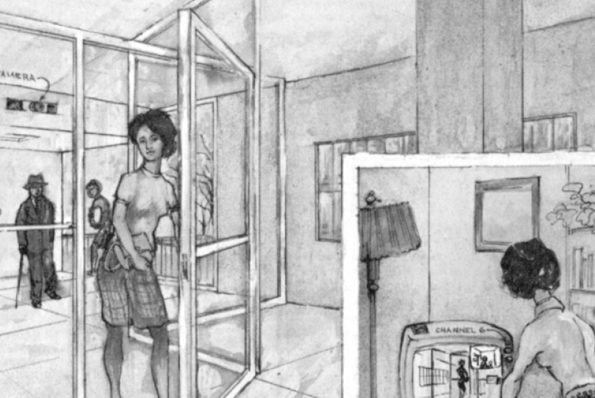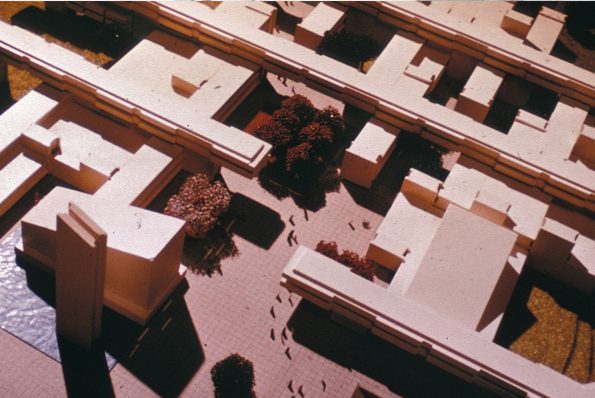Knoblauch and Abrahamson contribute to Black Lives Matter
Assistant Professor of Architecture Joy Knoblauch and PhD Candidate in History and Theory of Architecture Michael Abrahamson were featured in Aggregate for their writing in relation to the Black Lives Matter movement. Aggregate is a peer-reviewed website for the publication, workshops and discussion of advanced research in architectural history and theory.
Knoblauch’s contribution is titled, Defensible Space and the Open Society and focuses on the Broken Windows theory which has come under criticism in the wake of the killings of Michael Brown, Eric Garner, Kimani Gray, Tamir Rice, and many others. Comparing Broken Windows theory with the preceding theory of crime prevention through environmental design, Knoblauch posits it is evident that Oscar Newman’s 1972 book Defensible Space: Crime Prevention Through Environmental Design paved the way for acceptance of Broken Windows theory with its conflation of human safety and the preservation of the designed environment. Both assume that combating visual signs of blight can prevent crime, but Newman’s version emphasized self-policing over aggressive municipal involvement. Even so, each rests on the flawed assumption that reducing visual signs of blight (not to mention designing a better urban environment) is an acceptable substitute for solving the structural and social problems facing black Americans. Recuperating Oscar Newman’s ambitions while pointing to the paradoxes of the exercise of power in liberal societies, Knoblauch’s essay reminds us that the outcome of architectural ideas depends on their intentions as well as their implementation in a matrix of policies and practices.

Written in collaboration with James Graham of Columbia University, Michael Abrahamson‘s contribution titled, Designing the Great Migration, considers the library and dormitories constructed by Tougaloo College, a historically black college near Jackson, Mississippi, some fifty years ago. Designed by Gunnar Birkerts and Associates as part of a far more sweeping master plan, the new buildings aimed not only to provide for a projected growth in the student body, but also to inflect the college’s mission by preparing rural African-American students for industrial careers in northern cities. Imagining the Great Migration as a move from southern segregation to integrated life in the north, the master plan they created in the 1960s misrepresented the modernization process to Black students. Drawing on the work of Isabel Wilkerson and the testimony of Tougaloo alumna Gwendolyn Hayes, Graham and Abrahamson suggest that this strategy belied the pervasive segregation that graduates found in the North.

Visit the Aggregate website for more information on the Black Lives Matter project.




